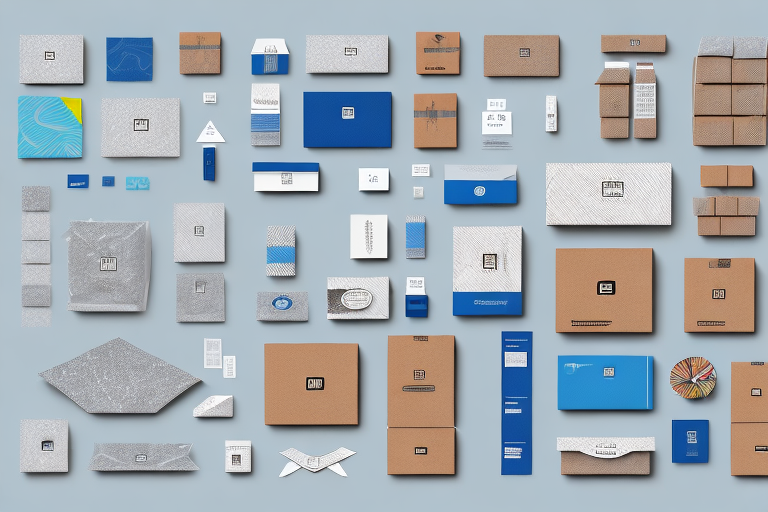Shipping is an essential aspect of any business aiming to reach customers beyond its immediate vicinity. Selecting the right packaging material is crucial to ensure that your products arrive safely and in excellent condition. Proper packaging not only minimizes the likelihood of damage, loss, or theft during transit but also enhances the overall customer experience. Read on to discover the best packaging materials for shipping your products effectively.
Introduction to Shipping Packaging
Effective shipping packaging is pivotal in ensuring that your shipments reach their intended destinations without any damage. Packaging serves to protect your products from external factors, prevent shifting or movement during transit, and guarantee that items arrive in pristine condition. According to the International Safe Transit Association (ISTA), proper packaging can reduce product damage by up to 30%, highlighting its significance in the shipping process.
Choosing the appropriate packaging material depends on the nature of the product, its weight, and its fragility. For instance, fragile items like glassware or electronics may require cushioning materials such as bubble wrap or foam inserts to safeguard against damage during transit.
Beyond protection, packaging plays a role in branding and marketing. Custom packaging featuring your company's logo and branding elements can create a memorable unboxing experience for customers, fostering brand recognition and loyalty. Balancing both functional and aesthetic aspects is essential to meet your packaging needs and appeal to your target audience.
The Importance of Choosing the Right Packaging Material
The selection of packaging material is a critical factor in the shipping process, directly influencing your customer's perception of your brand. Customers expect their orders to arrive safely and in perfect condition, and any damage incurred during shipping can lead to dissatisfaction and loss of trust. By choosing the right packaging material, you can effectively prevent damage and losses, ensuring customer satisfaction and encouraging repeat purchases.
Environmental impact is another significant consideration. With growing awareness of sustainability, customers increasingly prefer brands that utilize eco-friendly packaging materials. According to a Statista report, over 60% of consumers are willing to pay more for sustainable packaging. Utilizing sustainable materials not only reduces your carbon footprint but also appeals to environmentally conscious consumers.
Cost efficiency is also influenced by packaging choices. Some materials are heavier or bulkier, leading to higher shipping costs. Opting for lightweight yet durable packaging can help reduce shipping expenses, thereby increasing your profit margins. For example, using corrugated cardboard boxes can be both cost-effective and lightweight compared to wooden crates.
Types of Shipping Packaging Materials
The market offers a wide array of packaging materials, each suited to different shipping needs. Understanding the pros and cons of each can help you make informed decisions.
Corrugated Cardboard Boxes
Corrugated cardboard boxes are widely used due to their versatility, durability, and cost-effectiveness. They come in various sizes, shapes, and thicknesses, making them suitable for a range of products. Additionally, many boxes feature self-seal flaps, handles, and customizable prints, enhancing both functionality and branding.
Choosing the right corrugated box involves considering the weight and fragility of the items. Heavier items require thicker boxes with higher burst strength, while fragile items benefit from additional cushioning like bubble wrap or packing peanuts.
From an environmental perspective, corrugated cardboard is recyclable and some manufacturers offer eco-friendly options made from recycled materials or using vegetable-based inks for printing. Refer to the EPA guidelines for more information on sustainable practices.
Bubble Wrap
Bubble wrap is a popular choice for cushioning and protecting fragile items. Made of plastic, it is lightweight, easy to use, and provides excellent protection against impacts. When combined with other packaging materials like corrugated boxes, bubble wrap significantly reduces the risk of damage during shipping.
However, it's important to consider the environmental impact, as traditional bubble wrap is not biodegradable. Opting for biodegradable or recycled bubble wrap alternatives can mitigate this issue.
Packing Peanuts
Packing peanuts, typically made of polystyrene foam, are lightweight and cost-effective for protecting smaller items. They provide good cushioning but may not be suitable for heavier products due to limited support.
Environmental concerns arise as packing peanuts are not biodegradable and can contribute to pollution. Sustainable alternatives such as biodegradable packing peanuts made from cornstarch or shredded paper are available and recommended.
Air Pillows
Air pillows are a lightweight and cost-effective cushioning option. They inflate to provide cushioning, preventing items from shifting during transit. Air pillows are particularly useful for filling void spaces in packages and work well in conjunction with other packaging materials.
Additionally, some air pillows are made from recycled materials, offering a more sustainable packaging solution.
Foam Wraps
Foam wraps offer an alternative to bubble wrap and packing peanuts, providing effective cushioning for both lightweight and heavy items. Made from polyethylene foam, they are flexible and can be molded to fit flat or irregularly shaped items, protecting them from scratches and bumps during shipping.
Plastic Mailers
Plastic mailers are ideal for shipping flat, non-fragile items such as documents, apparel, and paper products. Made from high-strength polyethylene, they offer some cushioning and feature tamper-resistant seals to ensure security during transit.
Wooden Crates
For heavy, bulky, or highly fragile items, wooden crates are the preferred packaging material. They offer superior strength and protection, capable of withstanding the rigors of shipping. Wooden crates are customizable to specific needs and sizes but are generally more expensive and bulkier than other packaging options.
Best Practices for Packaging and Shipping
Implementing best practices in packaging ensures the safe and secure delivery of your shipments.
Safe and Secure Packing Tips
- Use Adequate Cushioning: Fill void spaces with appropriate cushioning materials to prevent items from shifting during transit.
- Choose the Right Box Size: Select a box that fits your item snugly to minimize movement and provide adequate protection.
- Seal Properly: Use high-quality tape to securely seal all flaps and seams, preventing the package from opening during shipping.
Labeling and Preparing Your Package
Proper labeling is crucial for ensuring your package reaches the correct destination without issues. Include the recipient's name, address, and contact information clearly on the package. Additionally, specify any special handling instructions if necessary.
Use tamper-resistant tape to seal the package and ensure all shipping costs are covered to avoid delays or complications during transit. Refer to the USPS shipping guidelines for detailed instructions on preparing your package.
Sustainable Packaging Options
With increasing environmental concerns, sustainable packaging has become a priority for many businesses. Utilizing eco-friendly materials not only reduces your environmental impact but also appeals to environmentally conscious consumers.
Options include:
- Recycled Materials: Use packaging made from recycled paper, cardboard, or plastics.
- Biodegradable Options: Select materials that decompose naturally, such as cornstarch-based packing peanuts or biodegradable bubble wrap.
- Minimalist Packaging: Reduce packaging size and materials to minimize waste.
Implementing sustainable packaging practices can enhance your brand image and contribute to global environmental efforts. For more information on sustainable packaging, visit the EPA's Sustainable Materials Management page.
Conclusion: Choosing the Right Packaging Material for Your Shipment
Selecting the appropriate packaging material is vital to ensure that your products arrive safely and in excellent condition. With a myriad of packaging options available, it's essential to consider the nature of your items, your budget, and your shipping requirements. By following best practices for packaging and opting for sustainable materials, you can enhance customer satisfaction, reduce costs, and contribute positively to environmental sustainability. Investing time in choosing the right packaging strategy will ultimately improve your brand's reputation and foster customer loyalty.






















